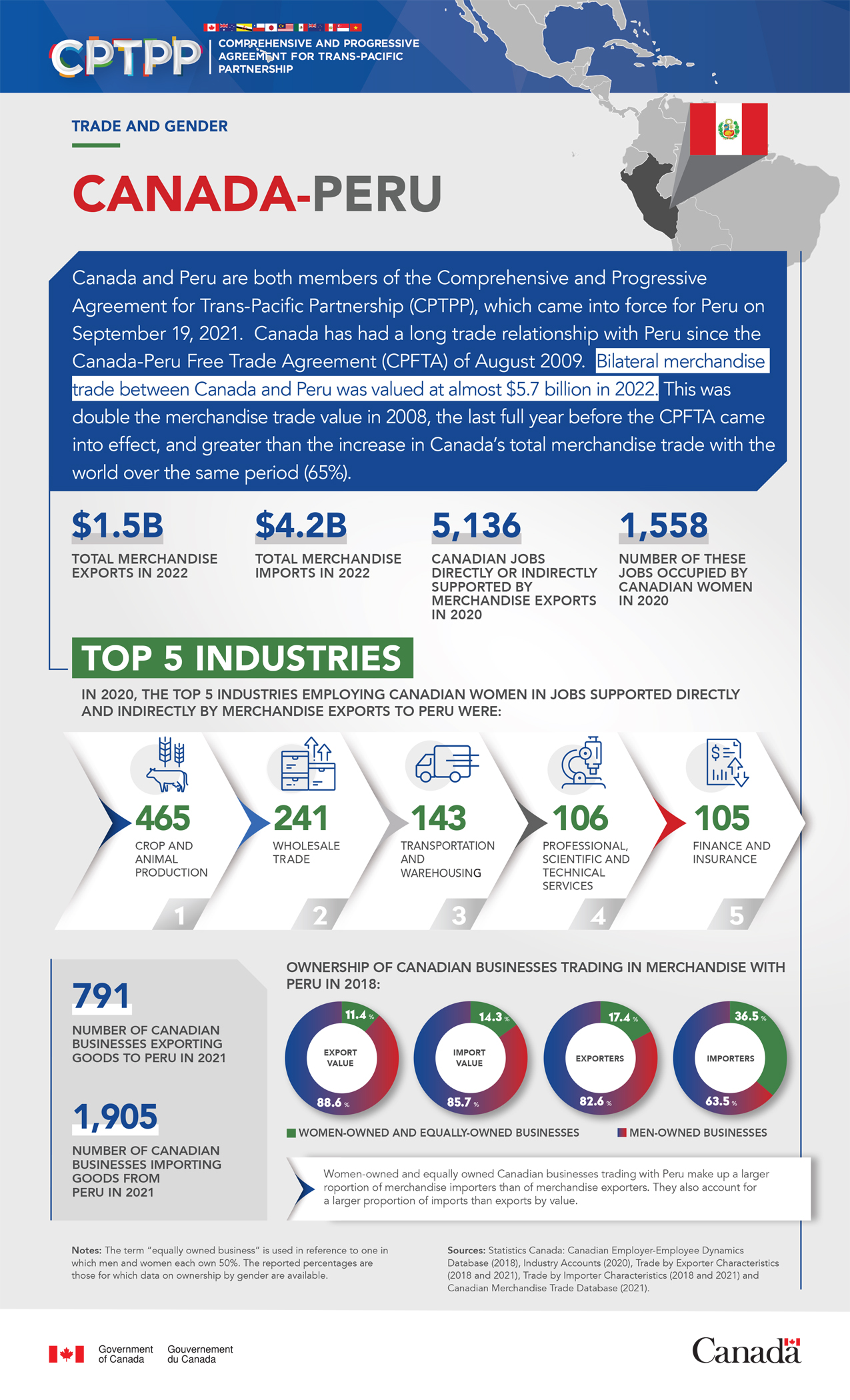Trade and Gender: Peru

Text version - Trade and Gender: Peru
Canada and Peru are both members of the Comprehensive and Progressive Agreement for Trans-Pacific Partnership (CPTPP), which came into force for Peru on September 19, 2021. Canada has had a long trade relationship with Peru since the Canada-Peru Free Trade Agreement (CPFTA) of August 2009. Bilateral merchandise trade between Canada and Peru was valued at almost $5.7 billion in 2022. This was double the merchandise trade value in 2008, the last full year before the CPFTA came into effect, and greater than the increase in Canada's total merchandise trade with the world over the same period (65%).
In 2022, Canada exported more than $1.5 billion worth of merchandise to Peru and imported almost $4.2 billion worth.
In Canada, 5,136 jobs were directly or indirectly supported by merchandise exports to Peru in 2020; 1,558 of these were occupied by Canadian women.
Top 5 industries
In 2020, the top 5 industries employing Canadian women in jobs supported directly and indirectly by merchandise exports to Peru were:
- crop and animal production: 465 jobs
- wholesale trade: 241 jobs
- transportation and warehousing: 143 jobs
- professional, scientific and technical services: 106 jobs
- finance and insurance: 105 jobs
The number of Canadian businesses exporting goods to Peru in 2021 was 791, while the number of Canadian businesses importing goods from Peru was 1,905.
Ownership of Canadian businesses trading in merchandise with Peru in 2018
Women-owned and equally owned businesses in 2018:
- export value: 11.4%
- import value: 14.3%
- exporters: 17.4%
- importers: 36.5%
Men-owned businesses in 2018:
- export value: 88.6%
- import value: 85.7%
- exporters: 82.6%
- importers: 63.5%
Women-owned and equally owned Canadian businesses trading with Peru make up a larger proportion of merchandise importers than of merchandise exporters. They also account for a larger proportion of imports than exports by value.
Notes: The term “equally owned business” is used in reference to one in which men and women each own 50%. The reported percentages are those for which data on ownership by gender are available.
Sources: Statistics Canada: Canadian Employer-Employee Dynamics Database (2018), Industry Accounts (2020), Trade by Exporter Characteristics (2018 and 2021), Trade by Importer Characteristics (2018 and 2021) and Canadian Merchandise Trade Database (2021).
- Date Modified: